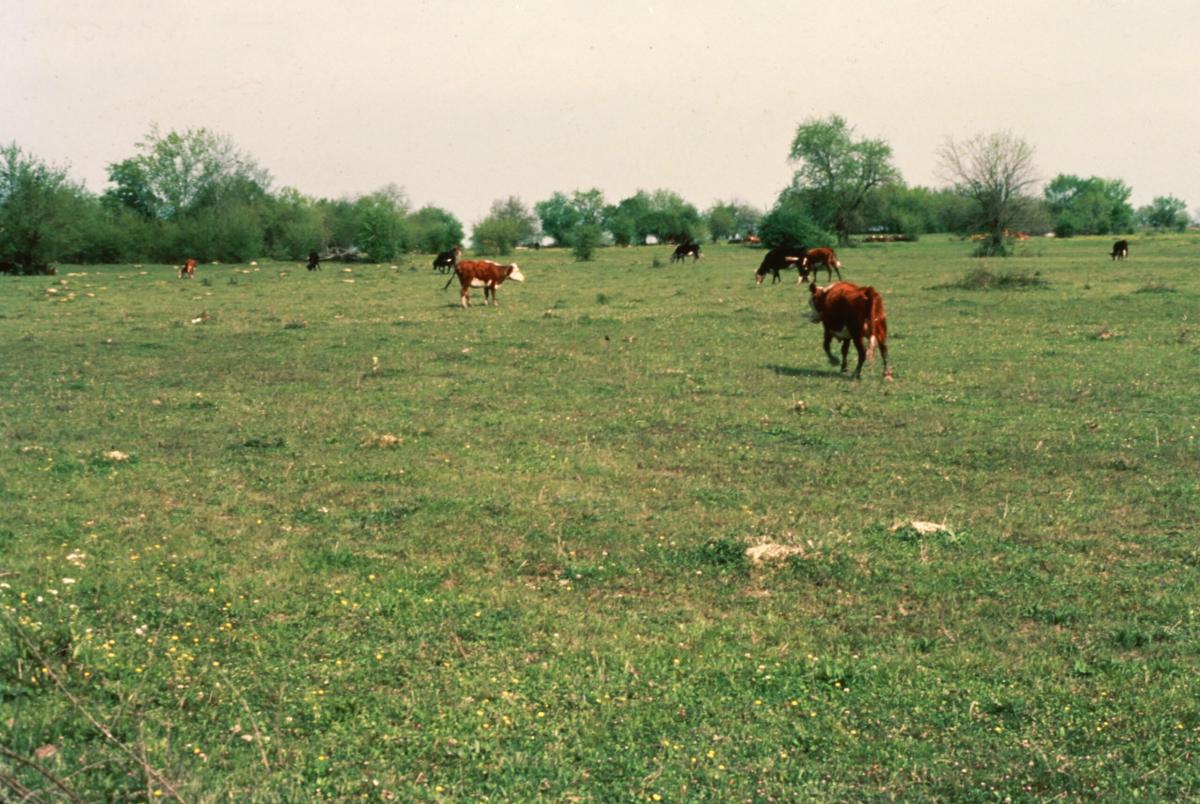
Virtually all livestock producers know that overgrazing (i.e. grazing a pasture closer than is normally recommended) is detrimental. However, it seems that many people only have a vague (or at least incomplete) understanding of exactly why overgrazing is harmful. Here are some reasons.
Reduced Forage Production- Leaves are the food production factory of a plant. They are, in essence, solar collectors that capture the sunlight needed for photosynthesis (food production). When the leaf area drops below a certain critical level (which varies with different plant species), there will be less food production and less forage growth.
Failure To Meet Animal Forage Quantity Needs- A point related to the one made above is that less food production results in less forage available in a pasture. As the amount of available forage declines, either the potential stocking rate declines or the more difficult it will be for animals to get as much food as they want to consume.
Stoppage Of Root Growth- An adage often used by forage experts is, “Take half and leave half.” In most situations, removing about half of the accumulated pasture forage available has little effect on root growth. When this amount is exceeded, root growth slows and soon essentially stops. This affects plant growth, the plant’s ability to tolerate drought, and the rate of pasture recovery once a drought has ended.
Negative Effects On Animal Health- In pastures, internal parasites are mostly present on or near the soil, so when pastures are grazed closely, grazing animals have much greater exposure to them. In addition, research has shown that in the case of toxic endophyte tall fescue, stem tissue close to the soil level has a particularly detrimental effect on animal performance
Unfavorable Effects On Wildlife- Most livestock producers like the idea of exercising management that is beneficial to birds and various wildlife species. It isn’t difficult to understand that an overgrazed pasture has little to offer wildlife with regard to food or cover.
Adverse environmental Impacts- Having some accumulated forage growth results in less runoff of rainwater. When overgrazing occurs, the amount of water retained for plant growth is reduced, while more nutrients are lost. Also, the closer a pasture is grazed, the more erosion occurs, especially if the amount of bare ground increases. Furthermore, the extent of hoof damage to wet pastures is much greater if there is little accumulated forage growth present.
Poor Soil Quality- Leaf shatter returns nutrients to the soil and helps improve organic matter, but when pastures are overgrazed, there is less leaf shatter. Also, lessened root growth (mentioned earlier) adversely affects the soil quality. More root growth means there will be more roots that will eventually die and contribute to soil organic matter. In addition, root channels help make soil friable and more favorable for plant growth.
Stress On Forage Plants- Defoliation (removal of plant top growth) is a major source of stress for plants, although some plant species are much more tolerant of defoliation than others. Nonetheless, overgrazing weakens plants and may even cause death. if they are overgrazed. Some clovers and other desirable pasture plants are quite sensitive to defoliation.
Interestingly, there may be overgrazing occurring in a pasture even if at first glance that doesn’t appear to be the case. This can happen when animals selectively graze certain plants more than other plants (i.e. overgraze some plants but not others). Many weeds are not very palatable, so livestock avoid them, thus giving the weeds a competitive advantage.
Conclusion
Obviously, a compelling argument can be made for the idea that overgrazing is undesirable. However, it can be much more harmful in some situations than in others. This depends largely on what plant species are present, but also on factors such as the duration and extent of overgrazing, climatic conditions, soil type, and even the degree of slope versus flatness of the terrain.
__________________
Foraging Ahead is a column presented by Ragan & Massey and written by Dr. Don Ball, Professor Emeritus at Auburn University. Dr. Ball is one of the authors of the popular book “Southern Forages,” which can be found via a computer search that uses the words, “Southern Forages, The Fertilizer Institute.”
